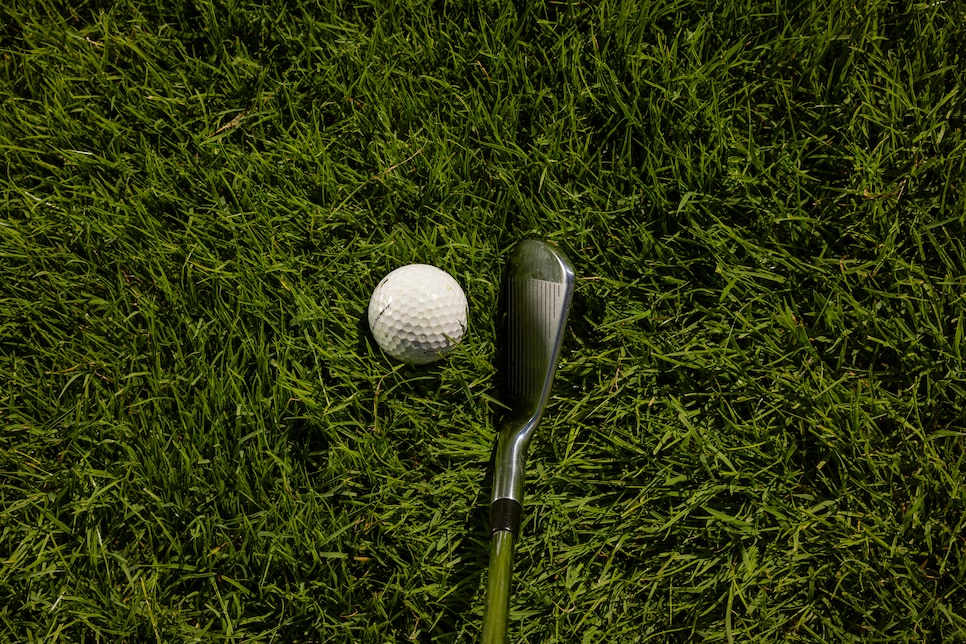Welcome to Lie Detector, a Golf Digest+ series where we use an ultra-slow-motion camera to help you identify and properly execute shots from various lies. Different lies, whether they be in the fairway, rough or bunker, require different techniques, but first, you must get better at identifying the lie that you have.
The biggest challenge of hitting an approach is the unpredictability of the shot. Will the ball come out dead or hot? Being able to judge which kind of lie you have should have a huge impact on club and shot selection. Perhaps the most important lie to look out for is the flyer, when the ball comes out hot with very little spin, often traveling much farther than it normally would.
Here’s how you can tell if you have a flyer lie or not.
Where it often happens
A flyer lie occurs when some grass (but not too much) gets trapped between the clubface and the ball at impact. That’s why flyers often occur in light to moderate rough. If the rough is too light, then there is no interference from the grass to create the flyer, and if the rough is too deep and the ball is sitting down, there may be so much grass between the clubface and the ball that clean contact becomes difficult. Also, flyer lies are much more common in dry conditions versus wet ones.
How to identify it 
Christian Iooss
Set the club behind the ball to see how much grass is between the clubface and the ball, says Best in New Jersey teacher Nick Bova. With a flyer lie, you’ll notice that there is some grass between the club and the ball. With flyer lies, the ball often appears to be sitting up in the rough.
2-MINUTE CLINIC: HOW TO HIT FROM A FLYER LIE
Bova says the best practice for determining flyer lies is to drop a few balls in the rough, observe how they’re sitting and then hit them. Did the ball shoot out quickly and go farther or did it come out slow and travel shorter? Experience is crucial to effectively predicting flyers.
How the ball/club will react
With a flyer lie, expect “the club to glide through the rough faster,” Bova says. “The ball comes out really hot. I think it’s harder to judge this shot than any other ones. The more you think it’s going to fly, the less club you’re going to use.”
MORE LIE DETECTOR: THE TRICKY INTO-THE-GRAIN CHIP
The ball will come out with very little spin, creating a knuckling trajectory. The ball typically carries farther and rolls out much more than usual when it lands. Bova says to take one or two less clubs when you suspect a flyer.
“It’s going to fly through the air with less resistance because there’s going to be less spin on it, and then once it gets on the green, it’s going to tumble,” Bova says.
For more on flyer lies, check out our 2-minute clinic on how to hit from them, below.
Your browser does not support the video tag.
Golf Digest Logo
How to hit from a flyer lie Flyer lies are confusing and keep golfers up at night. Best in State Teacher Nick Bova explains how to play them. Read Story
This article was originally published on golfdigest.com




